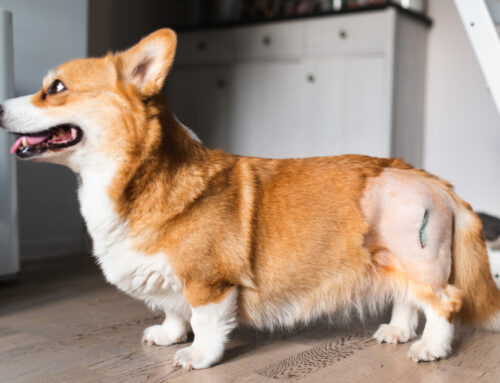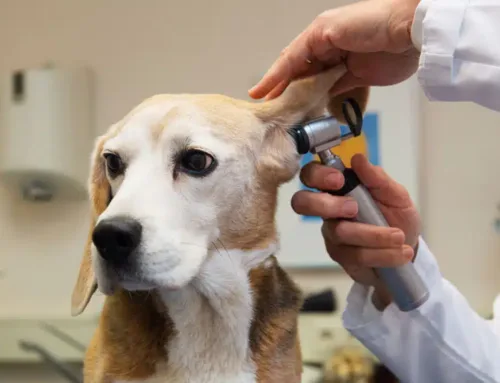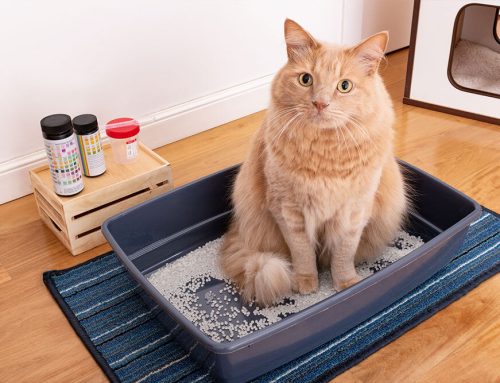You’ve decided to prioritize your pet’s dental health and schedule a dental cleaning at Fairfax Veterinary Clinic—which is good. Or, maybe you’ve heard that your dog or cat needs a “dental” or a “dental prophylaxis,” but you’re not entirely sure what that includes, or why anesthesia is necessary. In recognition of National Pet Dental Health Month, we give you a comprehensive explanation of what your pet’s dental involves.
Why professional pet dental cleanings matter
Periodontal disease is one of the most commonly diagnosed conditions in dogs and cats, and considered the number one pet health problem. By age 3, 80% of dogs and 70% of cats have early periodontal disease signs. This destructive inflammatory disease goes mostly undetected, because the most damage takes place under the gum line and along the tooth root. Untreated periodontal disease can result in significant dental complications, and eventual organ damage caused by high bacteria counts in the bloodstream. Moderate to severe periodontal disease is easily recognizable as:
- Bad breath
- Red, inflamed gums (i.e., gingivitis)
- Swelling
- Unusual drooling
- Sensitivity
- Rubbing the face on carpet or furniture
- Heavy tartar
- Loose or broken teeth
The only periodontal disease treatment is a professional veterinary dental cleaning (i.e., dental prophylaxis, and a comprehensive oral health assessment and treatment [COHAT]), and the veterinarian can thoroughly assess dental problems and safely clean your pet’s teeth only when your pet is under anesthesia.
Pre-anesthetic safety measures for pet dentals
While veterinary anesthesia concerns many pet owners, at Fairfax Veterinary Clinic we practice the most advanced anesthetic safety guidelines, and use customized protocols for every pet. Additionally, prior to your pet’s dental, we’ll recommend blood work to ensure they are healthy, and that their kidneys and liver are functioning well and can metabolize any medications used.
On an as-needed basis, we may also recommend:
- Chest X-rays
- ECG (i.e., electrocardiogram)
- Ultrasound
- Urinalysis
Dental anesthesia for pets
Imagine your pet’s reaction if we asked them to open up, say “Ah,” and then hold completely still while we manipulated their mouth and used sharp instruments—it wouldn’t go well! Anesthesia not only allows us to reach every nook and cranny in your pet’s mouth, but also reduces your pet’s stress, anxiety, fear, and pain. Your pet will wake up with no memory of the procedure, and will recover quietly and calmly before returning home.
Some of the key safety features in our anesthetic protocol include:
- Pre-medication to relax your pet
- Intravenous (IV) catheter
- Endotracheal tube
- Monitoring
- Gas anesthesia
- Supplemental oxygen
Dental X-rays for pets
Much like the tip of an iceberg, more than half of each canine or feline tooth lies below the gum line, anchored by one to three roots. Dental X-rays provide our Fairfax Veterinary Clinic veterinarians with an enhanced view of each tooth, from the visible crown, to the root and surrounding bone that are not visible to the naked eye. X-rays help them to diagnose different pathologies, including infection, inflammation, bone loss, tooth erosion or resorption, and fracture, and help the veterinarian get to the root of the problem—literally—and make a treatment plan specific to your pet. Treatment may include tooth extraction (i.e., removal), biopsy, antibiotic therapy, or “salvage” procedures to save vulnerable teeth.
Oral health assessment for pets
As your anesthetized pet enjoys their peaceful nap, our veterinarian performs a detailed exam of their entire oral cavity that includes not only each tooth but also the surrounding structures, such as the tongue, soft palate, upper and lower jaws, and the upper airway. Any findings are recorded in your pet’s dental chart and considered when making your pet’s customized treatment plan.
Dental cleaning for pets
Dental calculus (i.e., visible tartar) is carefully removed with specialized dental instruments that are powerful enough to break apart the concrete-like bonds of plaque and tartar, while protecting the tooth’s enamel. Our state-of-the-art handpieces are designed to clean above and below the gum line, driving periodontal disease from every known hiding place, and restoring your pet’s pearly whites. Following the cleaning, each tooth is polished to smooth away microscopic grooves made during the scaling process. This essential step seals the tooth surface and discourages plaque reformation.
Dental extractions for pets
Ideally, your pet would have a pristine exam and perfect X-rays, but thanks to the pervasive nature of periodontal disease, this is rarely the case. Fortunately, pets handle dental extraction well, especially at Fairfax Veterinary Clinic, because we use delicate techniques and comprehensive pain management.
Prior to any painful procedure or manipulation, the area is numbed with a local nerve block. Pets go home with additional pain medication, to keep them comfortable and promote timely healing. If your pet has dental surgery, we’ll schedule a follow-up appointment. Your pet must eat only soft foods until this recheck, to prevent incision damage.
Dental home care for pets

At your pet’s discharge appointment, we’ll review any medications or instructions, and provide resources for maintaining your pet’s newly restored dental health at home. While toothbrushing is the gold-standard, many effective alternatives, such as dental diets, treats, chews, and water additives proven to reduce plaque and tartar, are available.
Protecting your pet’s dental health is essential to their lifelong comfort and wellbeing. If you realize that your pet’s teeth need some professional attention, that’s OK—it’s never too late or too soon to start fresh. Contact Fairfax Veterinary Clinic to schedule a dental consultation.








Leave A Comment